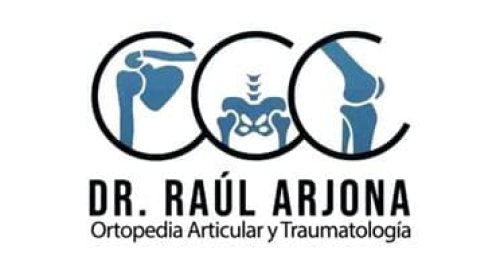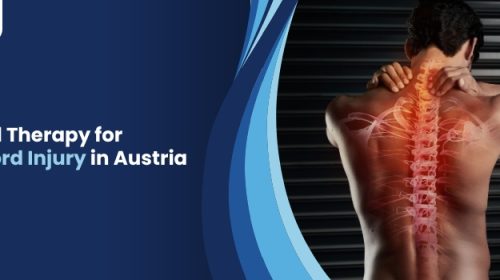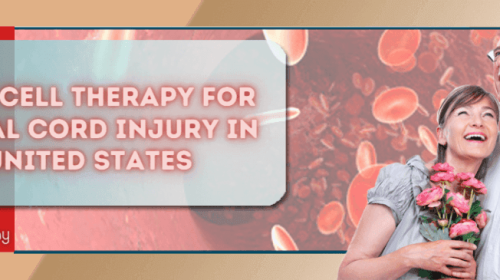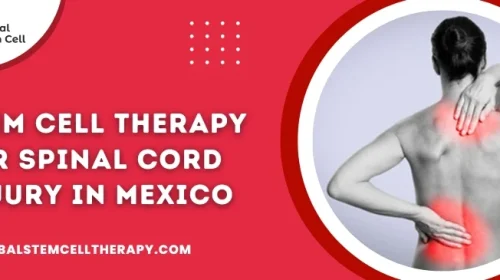Transforming Lives with Stem Cell Treatment for Spinal Cord Injuries
A spinal cord injury (SCI) refers to damage to the spinal cord, resulting in a loss of motor function, sensory function, or both. The spinal cord is a vital part of the central nervous system, transmitting signals between the brain and the rest of the body. Injuries to the spinal cord can have severe and often permanent effects on a person’s physical abilities and quality of life.
Effects and Symptoms: The effects of SCI depend on the location and severity of the injury. Common symptoms and complications include:
- Paralysis or loss of voluntary muscle movement.
- Loss of sensation, including the ability to feel touch, temperature, or pain.
- Impaired reflexes and coordination.
- Changes in sexual function, fertility, and bowel or bladder control.
- Chronic pain, muscle spasms, or neuropathic pain.
- Respiratory and cardiovascular problems.

Benefits of Stem Cell Treatment for Spinal Cord Injury
Stem cell treatment for spinal cord injury (SCI) has shown promising potential in both preclinical and clinical studies. Here are some of the benefits associated with stem cell treatment for SCI:
- Regeneration of damaged tissue: Stem cells have the ability to differentiate into various cell types, including neural cells. When introduced into the injured spinal cord, they can promote the regeneration of damaged nerve cells and tissues, potentially restoring lost neurological function.
- Reduction of inflammation: Following an SCI, inflammation in the spinal cord can contribute to secondary damage and hinder the healing process. Stem cells have immunomodulatory properties, which means they can help reduce inflammation and create a more favorable environment for tissue repair.
- Neuroprotective effects: Stem cells can secrete various growth factors and other molecules that promote the survival and growth of existing neurons. By providing a supportive environment for the injured spinal cord, stem cells can help protect the remaining healthy neurons from further damage and improve their functionality.
- Formation of new blood vessels: Stem cells have the ability to promote angiogenesis, the formation of new blood vessels. By enhancing blood flow to the injured area, stem cells can improve oxygen and nutrient supply, facilitating the healing process and supporting tissue repair.
Procedure of Stem Cell Therapy for Spinal Cord Injury
Patient Evaluation
Doctors evaluate the patient’s condition, understanding the extent of the spinal cord injury, and deciding if stem cell therapy is an appropriate course of treatment. The patient’s medical history, current health status, and the potential risks and benefits of the therapy are all taken into account.
Stem Cell Harvesting
Depending upon the type of stem cells to be used, the cells may be harvested from the patient or a donor. Common sources of stem cells include bone marrow, fat tissue, or blood. For induced pluripotent stem cells, skin or blood cells can be reprogrammed into a stem cell state.
Stem Cell Culturing
The harvested cells are cultured in a lab to increase their numbers. Scientists may also manipulate these cells to differentiate into specific types of cells needed for treatment. In the case of spinal cord injury, the aim would be to generate neural cells that can potentially repair the damaged area.
Stem Cell Verification
Before being used for treatment, the cultured stem cells need to be tested for their safety, quality, and potency. They should be free of contaminants and should have the potential to develop into the type of cells needed for repairing the spinal cord.
Stem Cell Transplantation
The cultured and tested stem cells are then transplanted into the patient’s body, either systemically or directly at the site of injury. This is a delicate procedure and must be done carefully to minimize further injury to the spinal cord.
Rehabilitation
After transplantation, doctors closely monitor the patient for any adverse reactions and signs of improvement. Physical rehabilitation might also be necessary to help the patient regain as much function as possible.
Best Hospitals for Spinal Cord Injury in the World
America, Cancun, Mexico
America, Cancun, Mexico, Mexico City
America, Guadalajara, Mexico
Regenerative Medicine Packages for Spinal Cord Injures
Stem Cell Therapy for Spinal Cord Injury Success Stories
Are you or a loved one struggling with the debilitating effects of a spinal cord injury (SCI)? We understand the challenges you face and the overwhelming desire to regain control over your life. That’s why we urge you to consider the potential benefits of stem cell treatment, a groundbreaking therapy that holds immense promise for SCI recovery. Take action today, and embark on a transformative journey towards regaining independence, functionality, and hope. Contact us and open the door to a brighter future.
Frequently Asked Questions
What causes spinal cord injuries?
Spinal cord injuries can be caused by various factors, including:
- Trauma: The most common cause of SCI is trauma resulting from accidents, such as motor vehicle accidents, falls, or sports injuries.
- Disease or infection: Certain diseases or infections, like spinal tumors, spinal abscesses, or meningitis, can damage the spinal cord.
- Degenerative conditions: Conditions like arthritis or spinal stenosis, which cause the narrowing of the spinal canal, can put pressure on the spinal cord and lead to injury.
- Non-traumatic causes: Spinal cord injuries can also occur due to non-traumatic causes, such as vascular problems, tumors, or inflammation.
How are spinal cord injuries diagnosed?
Spinal cord injuries are typically diagnosed through a combination of medical history, physical examination, and diagnostic tests. These may include:
- Imaging tests: X-rays, CT scans, or MRI scans can provide detailed images of the spine and help identify any spinal cord damage.
- Neurological assessment: A thorough examination of the patient’s sensory and motor functions, reflexes, and coordination.
- Electromyography (EMG) and nerve conduction studies (NCS): These tests can evaluate nerve and muscle function and identify the extent of the damage.
What are the key characteristics and functions associated with different levels of spinal cord injury?
The key characteristics and functions associated with different levels of spinal cord injury are as follows:
- Cervical injuries (C1-C8): These can result in quadriplegia (paralysis of all four limbs and the trunk) or varying degrees of impairment in the arms, legs, and trunk. Higher-level injuries may affect breathing and require respiratory support.
- Thoracic injuries (T1-T12): These injuries primarily affect the trunk and lower extremities. The extent of paralysis depends on the specific level of injury. Individuals may retain some arm and hand function.
- Lumbar injuries (L1-L5): These injuries primarily affect the hips and legs. Individuals with lumbar injuries usually retain full or near-full upper body function, including arm and hand control.
How does stem cell treatment for spinal cord injury work?
Stem cell treatment for spinal cord injury aims to replace or repair damaged cells in the spinal cord. Stem cells can differentiate into neural cells and other supporting cells, providing a potential means to replace lost or damaged tissue. Additionally, stem cells may release growth factors and promote the regeneration of existing cells, modulate inflammation, and provide neuroprotective effects.
What types of stem cells are used in spinal cord injury treatment?
Different types of stem cells have been explored for spinal cord injury treatment. These include embryonic stem cells, which are derived from early-stage embryos, induced pluripotent stem cells, which are adult cells reprogrammed to an embryonic-like state, and adult stem cells, such as mesenchymal stem cells derived from bone marrow or adipose tissue.
Request Free Quote














